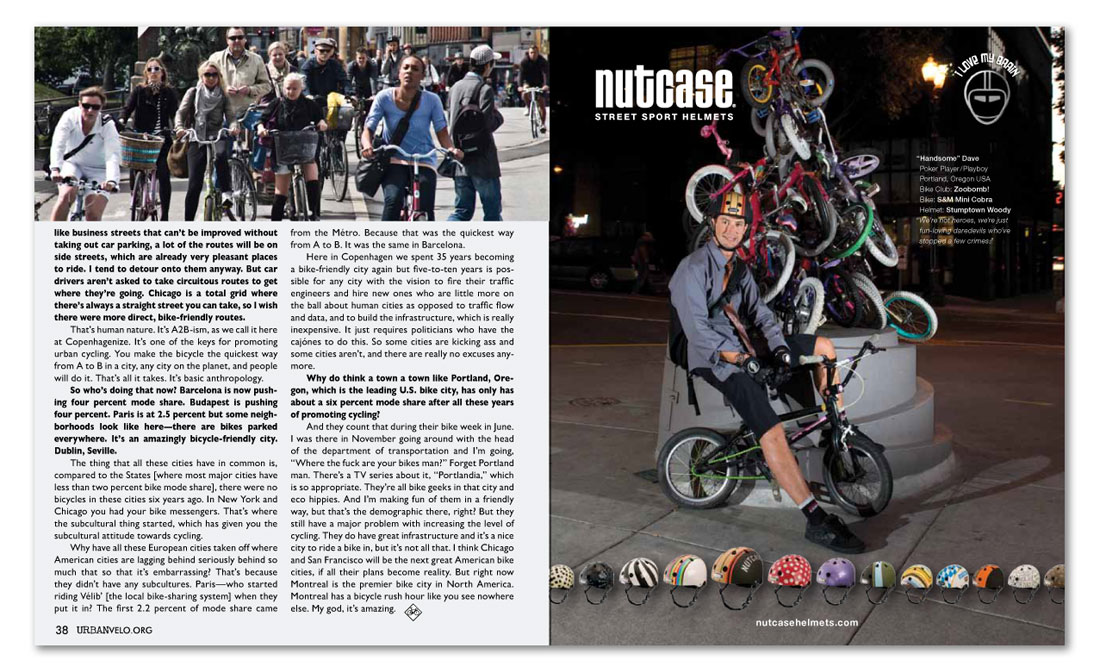


like business streets that can’t be improved without taking out car parking, a lot of the routes will be on side streets, which are already very pleasant places to ride. I tend to detour onto them anyway. But car drivers aren’t asked to take circuitous routes to get where they’re going. Chicago is a total grid where there’s always a straight street you can take, so I wish there were more direct, bike-friendly routes.
That’s human nature. It’s A2B-ism, as we call it here at Copenhagenize. It’s one of the keys for promoting urban cycling. You make the bicycle the quickest way from A to B in a city, any city on the planet, and people will do it. That’s all it takes. It’s basic anthropology.
So who’s doing that now? Barcelona is now pushing four percent mode share. Budapest is pushing four percent. Paris is at 2.5 percent but some neighborhoods look like here—there are bikes parked everywhere. It’s an amazingly bicycle-friendly city. Dublin, Seville.
The thing that all these cities have in common is, compared to the States [where most major cities have less than two percent bike mode share], there were no bicycles in these cities six years ago. In New York and Chicago you had your bike messengers. That’s where the subcultural thing started, which has given you the subcultural attitude towards cycling.
Why have all these European cities taken off where American cities are lagging behind seriously behind so much that so that it’s embarrassing? That’s because they didn’t have any subcultures. Paris—who started riding Vélib’ [the local bike-sharing system] when they put it in? The first 2.2 percent of mode share came from the Métro. Because that was the quickest way from A to B. It was the same in Barcelona.
Here in Copenhagen we spent 35 years becoming a bike-friendly city again but five-to-ten years is possible for any city with the vision to fire their traffic engineers and hire new ones who are little more on the ball about human cities as opposed to traffic flow and data, and to build the infrastructure, which is really inexpensive. It just requires politicians who have the cajónes to do this. So some cities are kicking ass and some cities aren’t, and there are really no excuses anymore.
Why do think a town a town like Portland, Oregon, which is the leading U.S. bike city, has only has about a six percent mode share after all these years of promoting cycling?
And they count that during their bike week in June. I was there in November going around with the head of the department of transportation and I’m going, “Where the fuck are your bikes man?” Forget Portland man. There’s a TV series about it, “Portlandia,” which is so appropriate. They’re all bike geeks in that city and eco hippies. And I’m making fun of them in a friendly way, but that’s the demographic there, right? But they still have a major problem with increasing the level of cycling. They do have great infrastructure and it’s a nice city to ride a bike in, but it’s not all that. I think Chicago and San Francisco will be the next great American bike cities, if all their plans become reality. But right now Montreal is the premier bike city in North America. Montreal has a bicycle rush hour like you see nowhere else. My god, it’s amazing.